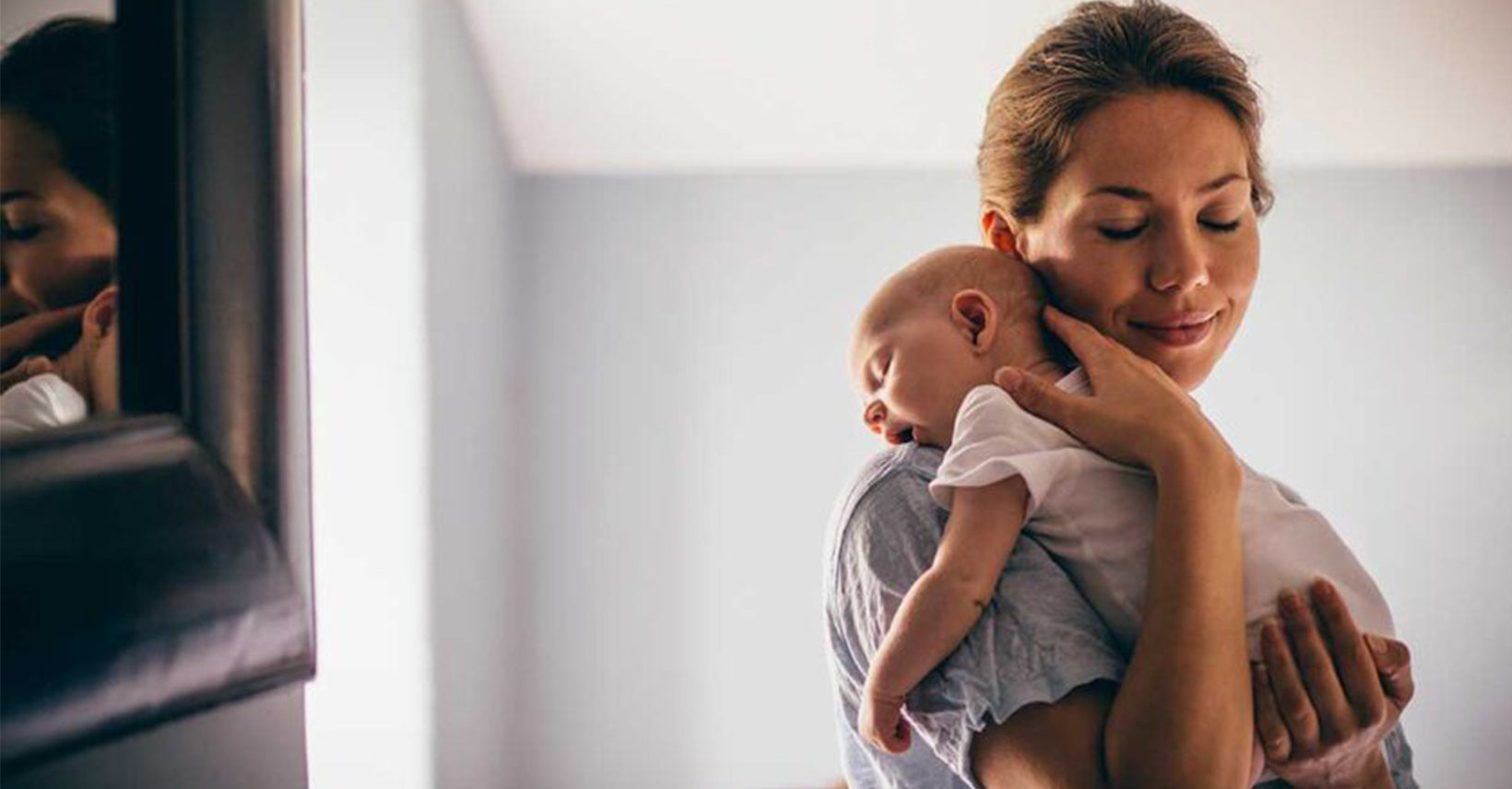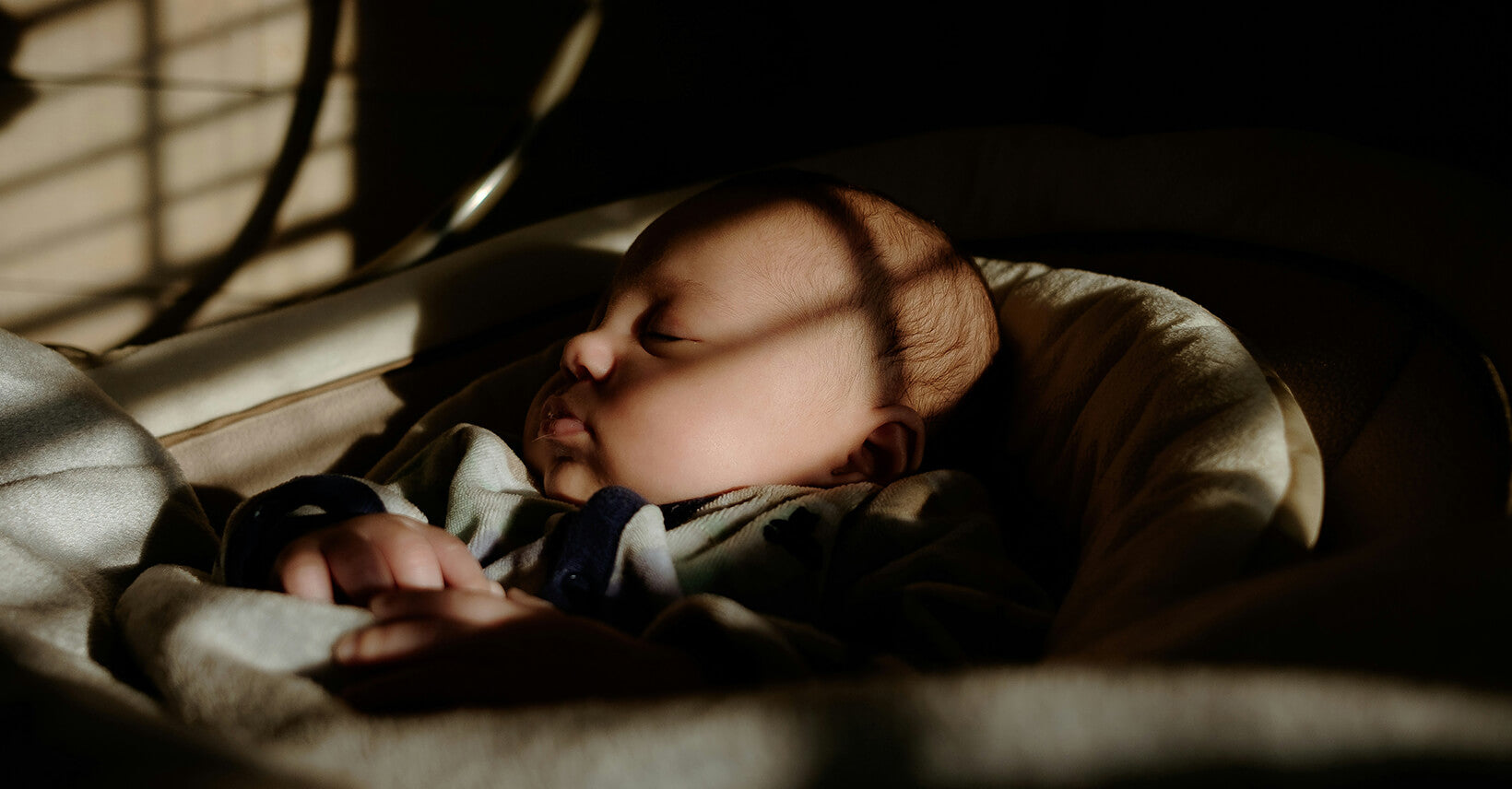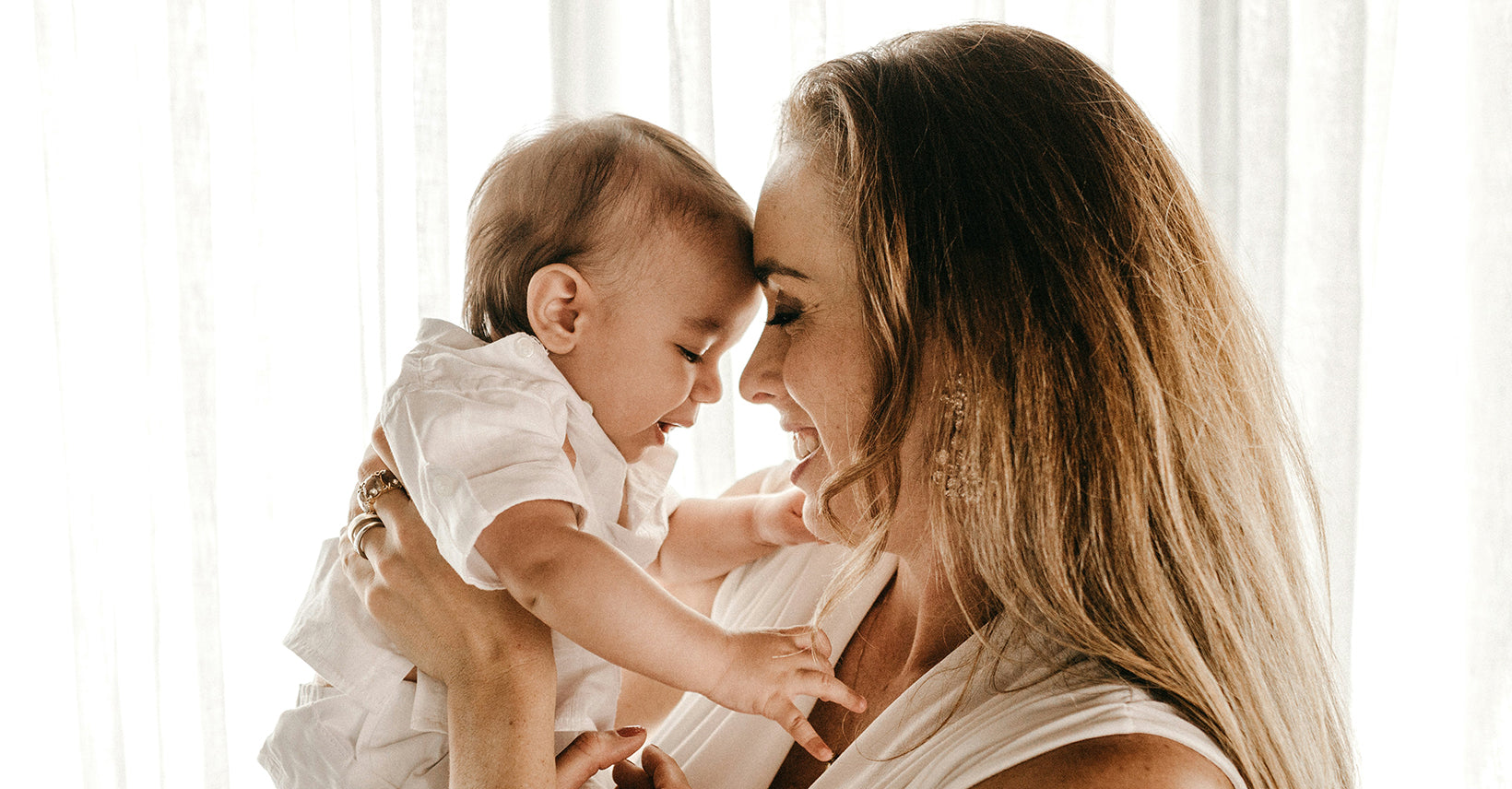
The Ultimate Guide Of Baby Wake Windows By Age
Understanding your baby's sleep patterns can be challenging for parents. One crucial aspect of infant sleep is knowing their optimal wake windows - the periods of time they can comfortably stay awake between naps or sleep cycles. These wake windows vary depending on age, and adhering to them can help prevent overtiredness and improve sleep quality.
In this comprehensive guide, Kaiya Baby will break down the recommended wake windows for babies at different stages of development.
What are wake windows?
Wake windows refer to the periods of time that a person, typically an infant or young child, can comfortably remain awake between periods of sleep or naps.
These windows vary depending on the individual's age and stage of development. Understanding and adhering to appropriate wake windows can help promote healthy sleep patterns and prevent issues such as overtiredness, which can negatively impact sleep quality and overall well-being.
For infants and young children, wake windows are influenced by factors such as their age, sleep needs, and individual differences in sleep patterns. As babies grow and develop, their wake windows gradually increase, allowing for longer periods of wakefulness between sleep sessions.
Monitoring a child's cues for tiredness, such as eye rubbing, yawning, or fussiness, can help determine when it's time for them to rest.
Besides having a sleep sack, establishing and maintaining consistent wake windows is important for promoting healthy sleep habits and ensuring that children get the rest they need for optimal growth and development. Adhering to appropriate wake windows can help regulate a child's sleep-wake cycle and contribute to overall well-being and daytime functioning.
Why wake windows are important?
Regulate Sleep Patterns:Wake windows help regulate the sleep-wake cycle by determining the optimal intervals between periods of wakefulness and sleep.
Prevent Overtiredness: Adhering to appropriate wake windows can prevent overtiredness, which can lead to difficulty falling asleep, frequent night awakenings, and disrupted sleep patterns.
Support Healthy Development:Consistent sleep patterns facilitated by appropriate wake windows are essential for healthy physical, cognitive, and emotional development in infants and young children.
Enhance Sleep Quality:Following recommended wake windows promotes better sleep quality by ensuring that children are neither under nor overstimulated when it's time to rest.
Improve Daytime Functioning: Adequate sleep obtained through proper wake windows enhances daytime alertness, mood, and cognitive functioning in children, leading to improved behavior and performance.
Facilitate Nap Transitions:Understanding wake windows helps parents and caregivers anticipate when children may be ready to transition from multiple naps to fewer naps per day, supporting the natural progression of sleep patterns.
Reduce Sleep Disruptions: By aligning sleep schedules with optimal wake windows, parents can minimize sleep disruptions such as frequent night awakenings and early morning wake-ups, promoting more restful sleep for the entire family.
Promote Parental Well-being:By facilitating better sleep for their children, understanding wake windows can also improve parental well-being by reducing stress and exhaustion associated with managing sleep challenges.
Optimize Learning and Development: Quality sleep obtained within appropriate wake windows supports optimal learning, memory consolidation, and overall cognitive development in infants and young children, laying the groundwork for future academic success.
Wake Windows By Age
Guide to Wake Windows by Age
Newborns (0-2 Months): 45 to 60 minutes
Infants (2-4 Months): 1-1.5 hours
Babies (4-6 Months): 1.5 to 2.5 hours
Young Infants (6-9 Months): 2-3 hours
Older Infants (9-12 Months): 2.5 to 4 hours
Toddlers (12-18 Months): 3 to 5 hours
Young Children (18-24 Months): 4 to 6 hours
Preschoolers (2-3 Years): 5 to 7 hours
Newborns (0-2 Months):
During the first few months of life, newborns have short wake windows due to their rapid growth and development. They typically need to nap frequently to recharge. Newborns can only handle short periods of wakefulness, usually between 45 minutes to an hourbefore needing to rest again. It's crucial to watch for sleepy cues such as eye rubbing, yawning, or fussiness, and respond promptly by helping them settle for sleep.
Infants (2-4 Months):
As infants grow, their wake windows gradually extend. By two to four months of age, most babies can stay awake for around 1-1.5 hoursbetween naps. However, it's essential to monitor their individual cues, as some babies may need shorter or longer wake times. Pay attention to signs of drowsiness, such as decreased activity, and aim to put them down for a nap before they become overtired.
Babies (4-6 Months):
Between four to six months, babies continue to develop more predictable sleep patterns. Their wake windows typically range from 1.5 to 2.5 hours, allowing for more extended periods of wakefulness between naps. It's essential to establish a consistent nap routine during this stage, paying attention to their natural sleep rhythms. While some babies may nap for shorter durations, others might consolidate their sleep into longer stretches.
Young Infants (6-9 Months):
By six to nine months, many infants are capable of staying awake for 2-3 hoursbetween naps. This extended wake window allows for more flexibility in daily routines and activities. However, it's crucial to maintain a balance between stimulation and rest to prevent overstimulation or exhaustion. Keep an eye out for signs of tiredness, such as rubbing eyes or becoming fussy, and provide opportunities for rest accordingly.
Older Infants (9-12 Months):
As babies approach their first birthday, their wake windows typically range from 2.5 to 4 hours. By this age, many infants have transitioned to a more structured nap schedule, usually consisting of two naps per day. Pay attention to their individual sleep needs and adjust their wake windows accordingly. It's essential to provide a conducive sleep environment and establish bedtime routines to promote healthy sleep habits.
Toddlers (12-18 Months):
Between 12 to 18 months, toddlers continue to refine their sleep patterns. Their wake windows typically range from 3 to 5 hours, allowing for more extended periods of wakefulness during the day. Many toddlers transition from two naps to one nap per day during this stage, although some may still require two shorter naps to meet their sleep needs. It's crucial to maintain consistency in nap times and bedtime routines to support healthy sleep habits.
Young Children (18-24 Months):
By 18 to 24 months, most children have fully transitioned to one nap per day, with wake windows ranging from 4 to 6 hours. It's essential to provide ample opportunities for physical activity and outdoor play during their wakeful periods to promote healthy development and tire them out for nap time. Establishing a consistent bedtime routine and sleep environment remains crucial for supporting quality sleep at night.
Preschoolers (2-3 Years):
Between 2 to 3 years old, preschoolers typically have wake windows ranging from 5 to 7 hours. While many children continue to nap during this stage, some may begin to outgrow their daytime naps altogether. It's important to monitor their individual sleep needs and adjust their schedules accordingly. Maintaining a consistent sleep routine and bedtime ritual can help preschoolers transition smoothly between wakefulness and sleep.
How to spot a baby’s sleepy cues?
Spotting a baby's sleepy cues is essential for determining when they are ready for sleep. Here are some common signs that indicate a baby is tired:
Eye Rubbing: Babies may rub their eyes when they are feeling sleepy as a way to soothe themselves.
Yawning: Like adults, babies may yawn when they are feeling tired or drowsy.
Fussiness or Irritability: Babies may become increasingly fussy or irritable as they become tired, making it challenging to comfort them.
Decreased Activity: As babies start to feel tired, they may become less active and alert, showing less interest in their surroundings.
Clasping Hands or Arching Back: Some babies exhibit physical cues such as clasping their hands together or arching their back when they are ready for sleep.
Crying: While crying can indicate various needs, persistent crying, especially when accompanied by other sleepy cues, may signal that a baby is overtired and in need of sleep.
Glazed or Distant Look: A baby may appear to have a glazed or distant look in their eyes when they are tired and in need of rest.
Rooting Reflex: Babies may display the rooting reflex, where they turn their head towards a source of touch or pressure, even when they are not hungry, as a sign of fatigue.
Decreased Social Interaction: When babies start to feel sleepy, they may show less interest in social interaction and prefer to be left alone.
Quiet Alertness: Some babies enter a state of quiet alertness just before they become tired, during which they are calm but still attentive. This can be a subtle cue that they are ready for sleep.
By paying attention to these sleepy cues, parents and caregivers can respond promptly to their baby's needs and help them transition to sleep more easily.
Conclusion
Understanding your baby's wake windows is key to promoting healthy sleep habits and preventing overtiredness. By following the recommended wake windows for their age group and paying attention to their individual sleep cues, you can help ensure that your little one gets the rest they need for optimal growth and development.
Remember to be flexible and responsive to your baby's changing sleep needs as they continue to grow and develop. With patience and consistency, you can establish healthy sleep habits for your babies.

Yujia Shi
An expert in sleep sack design, is a valued contributor to Kaiya Baby's blog. With a strong background in baby sleep bags and maternal care, she is highly regarded for her professionalism. Yujia Shi prioritizes baby comfort and safety in her designs, using high-quality materials. Her insightful articles on sleep bags have been featured in reputable publications and have gained a significant readership. Trust Yujia Shi to help you create a comfortable and safe sleep environment for your baby, backed by her proven track record in the industry.



Leave a comment
This site is protected by reCAPTCHA and the Google Privacy Policy and Terms of Service apply.